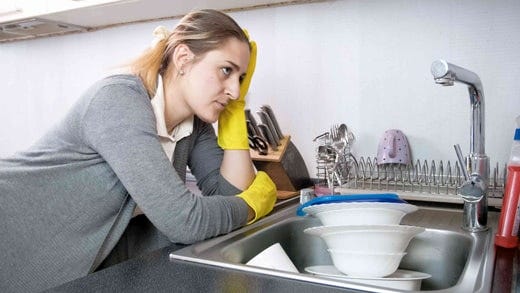Leaking Dishwasher Causes & How to Fix Them

A leaking dishwasher can cause more problems than just a wet kitchen floor. Whether the cause is a damaged water supply line, uneven dishwasher, or faulty drain line installation, knowing how to address them promptly is crucial for maintaining a harmonious kitchen environment.
Explore this article to identify the dishwasher leaking problem and embark on a dishwasher troubleshooting journey equipped with practical solutions to resolve common dishwasher leaking issues.
How can you find a leak in your dishwasher?
Whether your dishwasher’s leak is coming from underneath the appliance or the door at the front, there could be several reasons behind it.
Before trying to fix the leak on your own, it's important to read the dishwasher manufacturer’s instruction manual or a user guide and dishwasher parts specific to your model.
Here are some tips for fixing a dishwasher leak:
- Always unplug the dishwasher or turn off the breaker before starting any repairs.
- Make sure the water valve under the sink is closed.
- Keep towels or a sponge nearby to clean water and prevent slippery floors.
Why does your dishwasher leak?
Dishwasher leaks can happen for many reasons. If you're unsure where the leak comes from, consider these possibilities:
Common causes of dishwasher leaks:
1. Damaged water supply line
Leaks underneath the unit often point to a compromised water supply line. Inspect the line for signs of damage, and if your dishwasher isn't filling with water, a faulty supply line could be the culprit.
Solution:
- Power off the dishwasher by unplugging or turning off the breaker.
- Take off the lower kick panel by turning the fasteners.
- Remove the panel and sound insulation, making note of the installed orientation and position.
- Locate the damaged water line hookup at the front left corner of the unit.
- Inspect the water connection and check the floor for dampness.
- Hand-tighten the hose if needed until the coupling is tight.
- Using pliers, check the tightness of the coupling.
- An additional turn may be required to seal the rubber gasket.
- Teflon is unnecessary when the fittings and hoses have a rubber gasket.
2. Faulty drain line installation
Excessive water in the dishwasher's tub might indicate a drain line issue. Check the connection under the sink for proper installation.
Solution:
- Inspect if the drain lines come through the bottom of the cabinet.
- Check your model’s owner manual to ensure the drain hose connection, installation, and position are consistent with the instructions (varies by model).
- Check to see if the hose clamp is positioned correctly.
- If the drain line appears installed correctly, it may be clogged and require a professional's help.
3. Soiled or dirty door gasket
A dirty or soiled door gasket might prevent proper sealing and lead to a leak.
Solution:
- Use a damp washcloth to wipe down the gasket.
- Scrub the gasket clean using a toothbrush and warm, soapy water.
- Spray any present mold or mildew with 3% hydrogen peroxide.
4. Unlevel dishwasher
A dishwasher must be level to function correctly. Leaks caused by an unlevel dishwasher can lead to water overflowing the tub and spilling out from under the door. Leveling the appliance is essential to stop the leak.
Solution:
- Check if the unit is straight using a level at the front top.
- If it's not straight, switch off the power to the appliance.
- Unscrew the cabinet anchors.
- Remove the lower kick panel by turning the fasteners.
- Take off the panel and any sound insulation, remembering how they were positioned.
- Move the legs up or down until the unit sits evenly in the cabinet and is supported by the back wheels.
- Screw the cabinet anchors back in.
- Turn the power back on for the appliance.
5. Incorrect detergent
In rare cases, using the wrong detergent can cause a leak. Certain soaps like hand washing detergent, dish soap, or laundry detergent can produce excessive suds overflowing from the dishwasher.
Solution:
- Only use Finish dishwashing detergent products, the #1 recommendation by the leading dishwasher manufacturers.
- Store the dishwashing detergent in a dry, cool place, away from heat and moisture.
.png?width=70&height=45&format=png&quality=50)